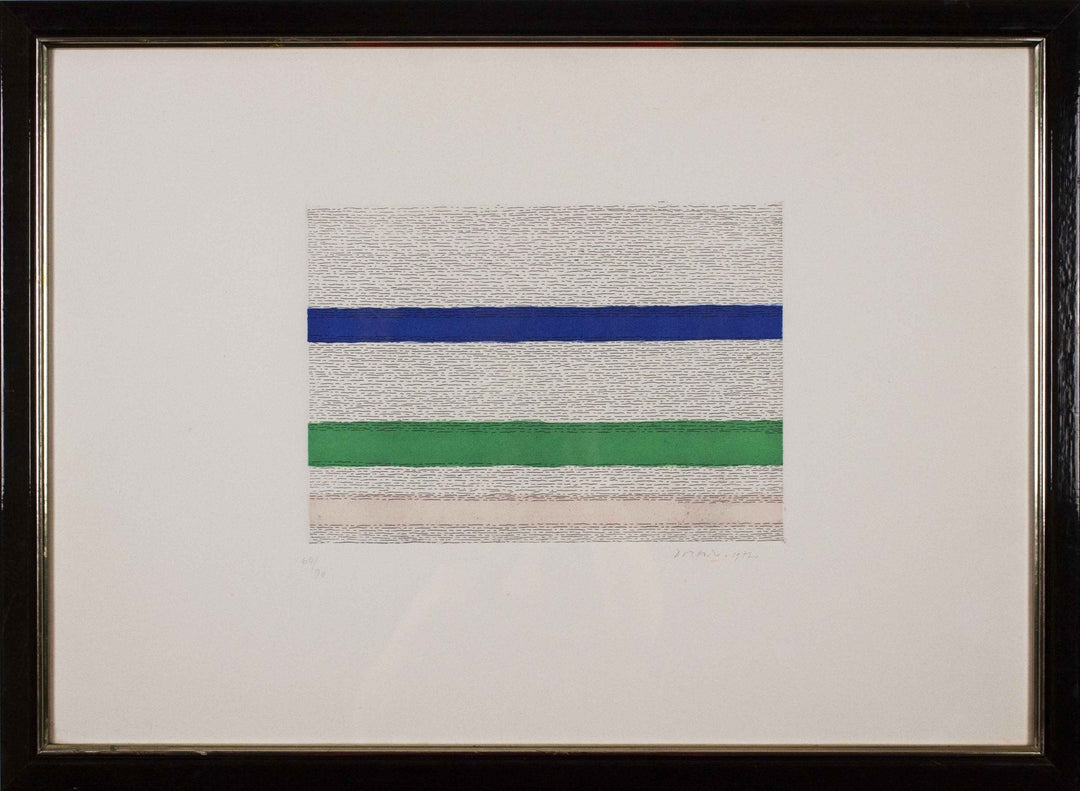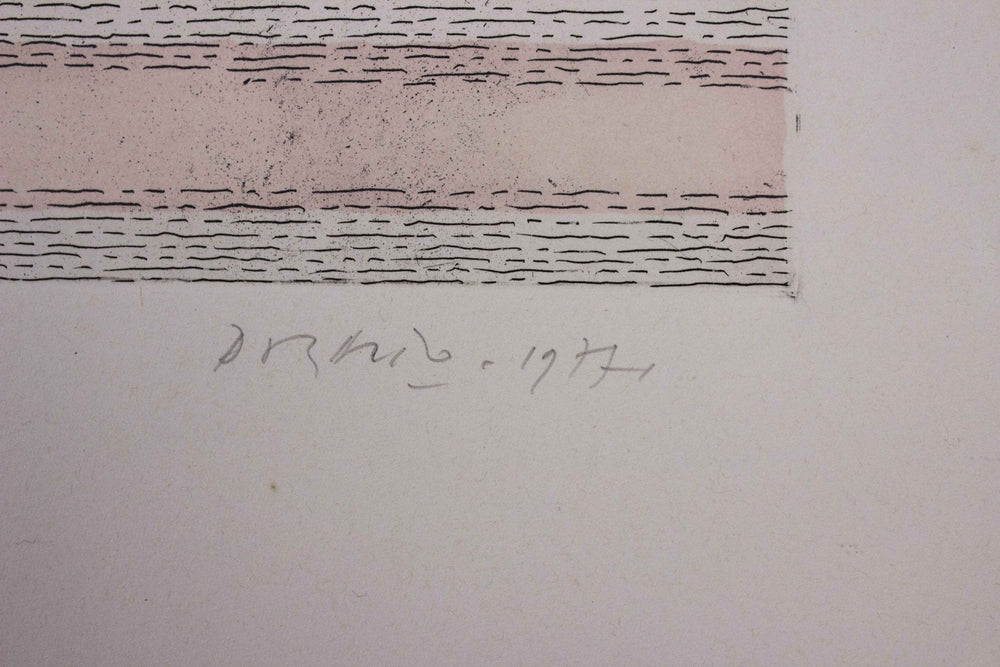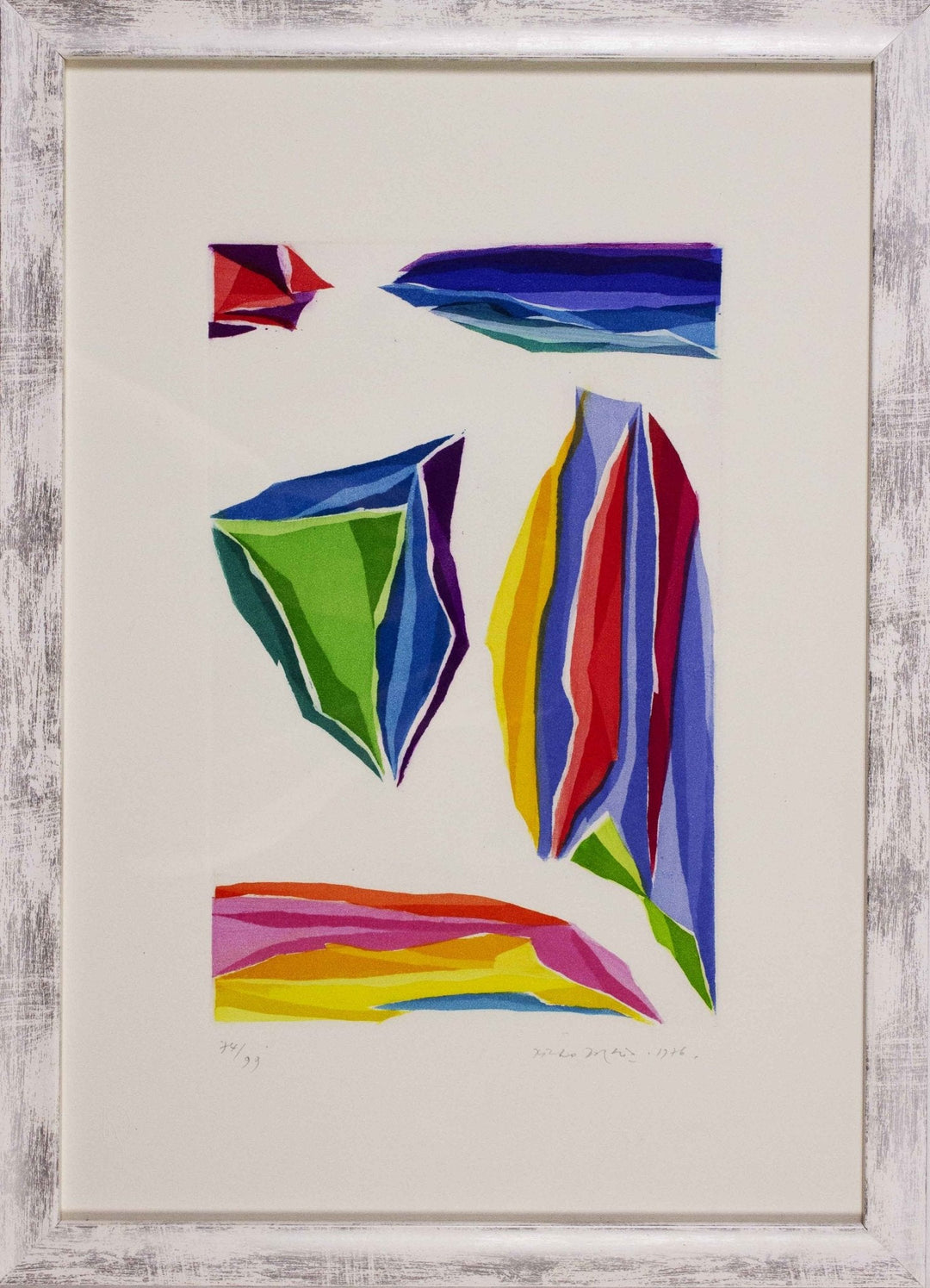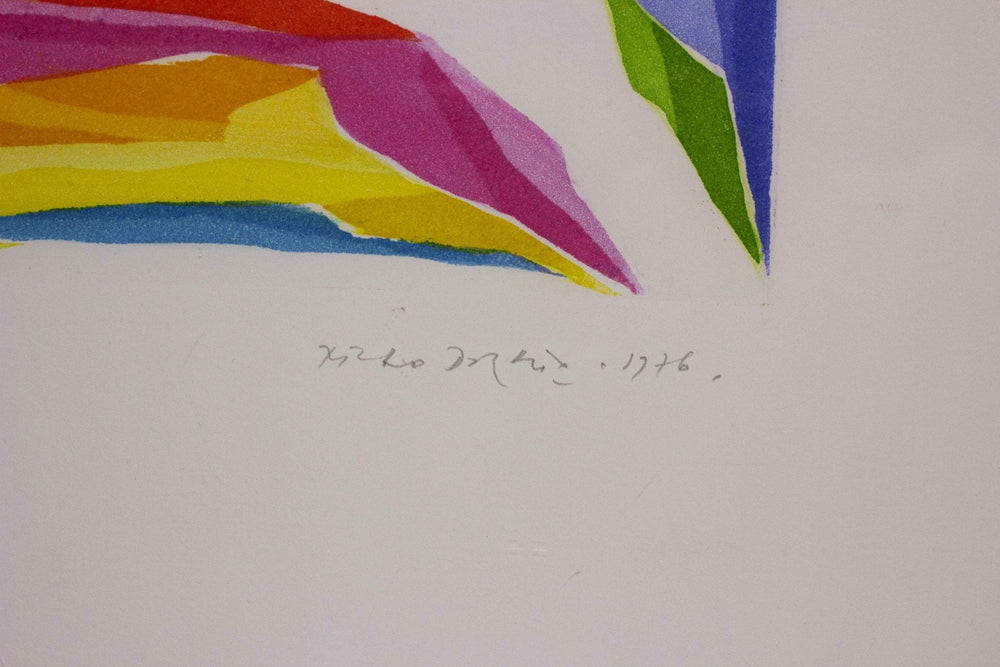PIERO DORAZIO
Piero Dorazio (Rome, June 29, 1927 – Perugia, May 17, 2005) was one of the most important exponents of Italian and European abstract art. His artistic career played a decisive role in introducing and establishing abstract art in Italy in the post-war period, making the name Dorazio synonymous with pictorial innovation and chromatic research.
From a young age, Piero Dorazio showed a strong inclination for art, attending the studio of the painter Aldo Bandinelli and initially approaching landscape and still life. These early works are rooted in a figurative tradition, but already with stylistic hints that foreshadow the overcoming of naturalism. Alongside classical studies, Dorazio enrolled in the Faculty of Architecture at the University of Rome, where he developed a growing interest in forms and space, elements that would become central to his pictorial poetics.
In 1945 Dorazio came into contact with the protagonists of Roman abstract art and contributed to the founding of the Social Art Group, which aimed to renew the Italian artistic language by freeing it from social and ideological purposes. Already in 1947 Piero Dorazio was among the signatories of the manifesto of the Forma 1 Group, together with artists such as Carla Accardi, Achille Perilli, and Giulio Turcato, all united by the desire for art detached from realism and oriented towards structure and pure form.
In the same year, Dorazio won a scholarship at the École des Beaux-Arts in Paris, an experience that put him in direct contact with great European masters such as Le Corbusier, Matisse, and Miró and deepened the thought of Kandinsky, which would profoundly influence his artistic conception. After Paris, in 1950 the painter inaugurated with Perilli and Guerrini the bookstore-gallery “L’Age d’Or” on Via del Babuino in Rome, an important meeting point for the artistic avant-gardes of the time.
In the 1950s the artist intensified his exhibition activity in Italy and abroad. In 1954 he exhibited in New York at the Rose Fried Gallery and met exponents of Abstract Expressionism such as De Kooning, Rothko, and Motherwell, an exchange that further enriched his artistic language. The return to Italy marked a prolific period: he participated in the 1960 Venice Biennale, where a personal room was dedicated to him, and in the same year founded and directed the Fine Arts department at the University of Pennsylvania in Philadelphia, a position he held until 1967.
In the 1960s Dorazio participated in major international exhibitions: from Documenta 2 in Kassel to the Paris Biennale, receiving prestigious awards such as the Kandinsky Prize. In 1968 he spent six months in Berlin as a lecturer at the Deutsche Akademische Austauschdienst, thus consolidating his fame also in the German and European context.
From the 1970s onwards the artist settled permanently in Todi, Umbria, in an ancient Camaldolese hermitage transformed into a studio and residence. This period is characterized by a renewed interest in nature and Umbrian light, which became a source of inspiration for his artworks, increasingly luminous, vibrant, and characterized by refined chromatic contrasts. His artworks express a language in which color, line, and space integrate to evoke pure visual emotions, according to the principle that “the abstract painting represents nothing but itself.”
In the 1980s and 1990s Piero Dorazio collaborated on important public artistic projects, including the ceramic decoration of the Carabinieri barracks in Castel di Lucio and the creation of mosaics for the Rome metro stations. His last creative phase is distinguished by the intense and controlled use of “reticoli,” patterns of lines and colors that build vibrant pictorial surfaces full of energy and dynamism.
The artist was celebrated worldwide: from the Musée d’Art Moderne de la Ville de Paris (1979) to the Musée de Grenoble (1990) up to the Museion in Bolzano and the Institut Valencia d’Art Modern. After a long and fruitful career lasting almost sixty years, Piero Dorazio died in Perugia on May 17, 2005, leaving a fundamental artistic legacy for understanding the development of Italian and international abstract art.
Piero Dorazio artworks
The artworks of Piero Dorazio cover a broad and diverse time span, ranging from early figurative experiments to full adherence to abstract art. The paintings of Piero Dorazio are characterized by the progressive abstraction of the subject and a masterful use of color and line. In the 1950s and 1960s the famous “reticoli” emerge, geometric compositions made up of dense weaves of brushstrokes that generate a strong sense of movement and spatiality.
Besides canvas paintings, a fundamental part of Dorazio’s artistic production is represented by graphics: lithographs, serigraphs, and etchings testify to his tireless search for new expressive modes. These graphic techniques allow him to experiment more immediately with the interaction between color, sign, and surface, making each print a standalone artwork, never a mere reproduction.
The lithographs of Piero Dorazio are characterized by a lively and calibrated use of color, while the serigraphs show a rigorous attention to compositional structure. The etchings, on the other hand, reveal a more intimate Dorazio, attentive to the definition of the sign and the relationship between empty and full. The variety and quality of his graphics contribute to making the artworks of Piero Dorazio an essential chapter of contemporary Italian graphics.
Piero Dorazio valuations
The valuations of Piero Dorazio today reflect the international recognition of the artist and the growing collector interest in his artworks. In particular, the valuations of the lithographs of Piero Dorazio generally start from about 500-800 euros for small format sheets, while rarer and signed editions can reach amounts exceeding 2,000 euros.
Regarding the serigraphs of Piero Dorazio, prices fall within a similar range, with an average varying between 600 and 1,500 euros depending on the subject, year, and number of copies made. The etchings of Piero Dorazio have slightly higher valuations for prestigious editions, with ranges between 1,000 and 2,500 euros for large format sheets or those of particular historical relevance.
The original paintings of Piero Dorazio, instead, reach much higher values: his most important canvases can exceed 100,000 euros at major international auctions.
In general terms, the valuations of Piero Dorazio are steadily increasing, thanks to the attention that international auction houses and specialized galleries reserve for his production. This trend confirms the central role that the artist Piero Dorazio occupies today in the contemporary art market and guarantees good appreciation also for those wishing to invest in artworks of Piero Dorazio.


















